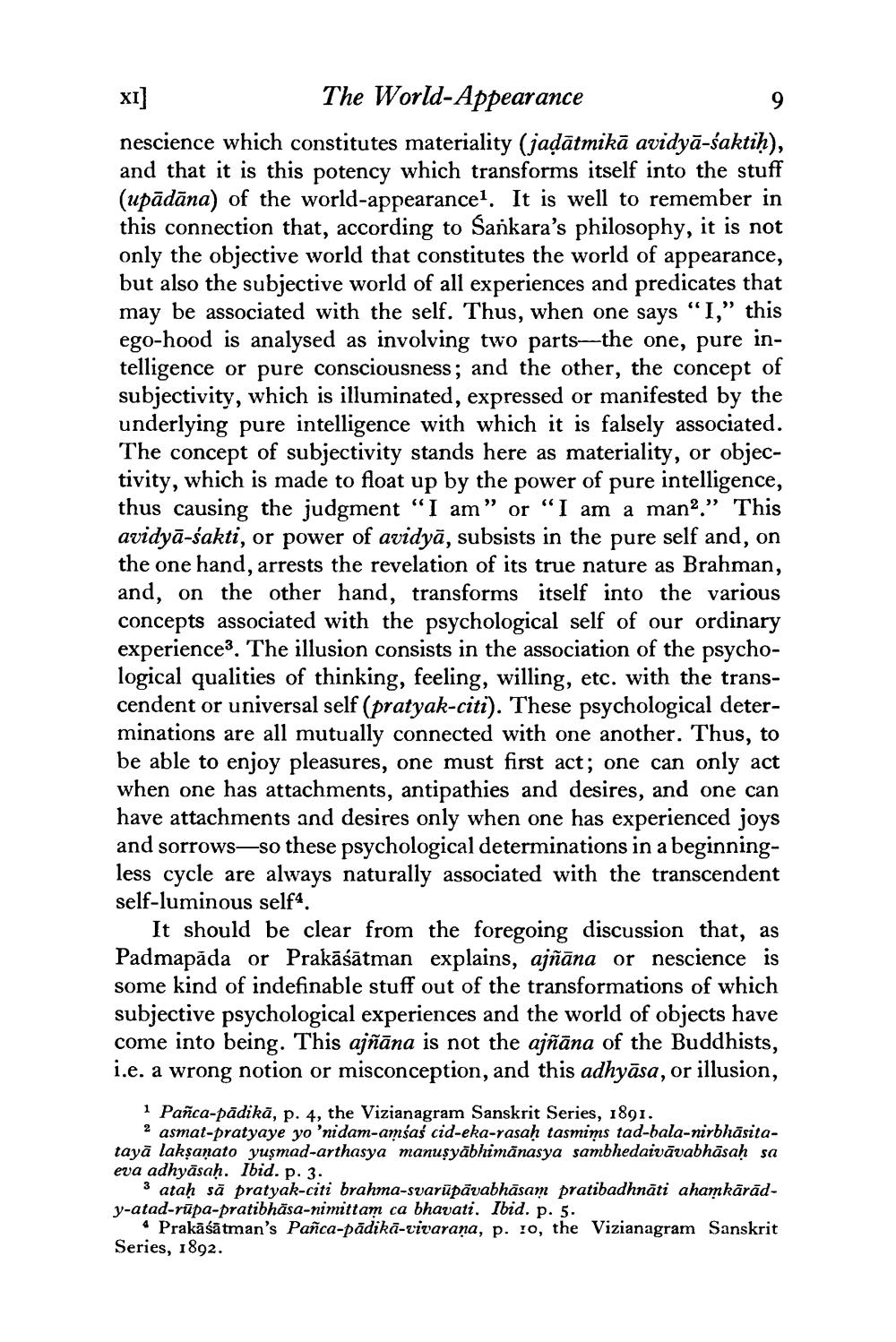________________
XI]
The World-Appearance
nescience which constitutes materiality (jaḍātmikā avidyā-śaktiḥ), and that it is this potency which transforms itself into the stuff (upādāna) of the world-appearance1. It is well to remember in this connection that, according to Sankara's philosophy, it is not only the objective world that constitutes the world of appearance, but also the subjective world of all experiences and predicates that may be associated with the self. Thus, when one says "I," this ego-hood is analysed as involving two parts-the one, pure intelligence or pure consciousness; and the other, the concept of subjectivity, which is illuminated, expressed or manifested by the underlying pure intelligence with which it is falsely associated. The concept of subjectivity stands here as materiality, or objectivity, which is made to float up by the power of pure intelligence, thus causing the judgment "I am" or "I am a man." This avidya-sakti, or power of avidya, subsists in the pure self and, on the one hand, arrests the revelation of its true nature as Brahman, and, on the other hand, transforms itself into the various concepts associated with the psychological self of our ordinary experience3. The illusion consists in the association of the psychological qualities of thinking, feeling, willing, etc. with the transcendent or universal self (pratyak-citi). These psychological determinations are all mutually connected with one another. Thus, to be able to enjoy pleasures, one must first act; one can only act when one has attachments, antipathies and desires, and one can have attachments and desires only when one has experienced joys and sorrows-so these psychological determinations in a beginningless cycle are always naturally associated with the transcendent self-luminous self4.
9
It should be clear from the foregoing discussion that, as Padmapada or Prakāśātman explains, ajñāna or nescience is some kind of indefinable stuff out of the transformations of which subjective psychological experiences and the world of objects have come into being. This ajñāna is not the ajñāna of the Buddhists, i.e. a wrong notion or misconception, and this adhyāsa, or illusion,
1 Pañca-pādikā, p. 4, the Vizianagram Sanskrit Series, 1891.
2 asmat-pratyaye yo 'nidam-amsaś cid-eka-rasaḥ tasmims tad-bala-nirbhāsitataya lakṣaṇato yuşmad-arthasya manuṣyābhimanasya sambhedaivāvabhāsaḥ sa eva adhyasaḥ. Ibid. p. 3.
3 ataḥ să pratyak-citi brahma-svarūpāvabhāsam pratibadhnāti ahamkārādy-atad-rupa-pratibhasa-nimittam ca bhavati. Ibid. p. 5.
Prakāśātman's Pañca-padika-vivarana, p. 1o, the Vizianagram Sanskrit Series, 1892.




